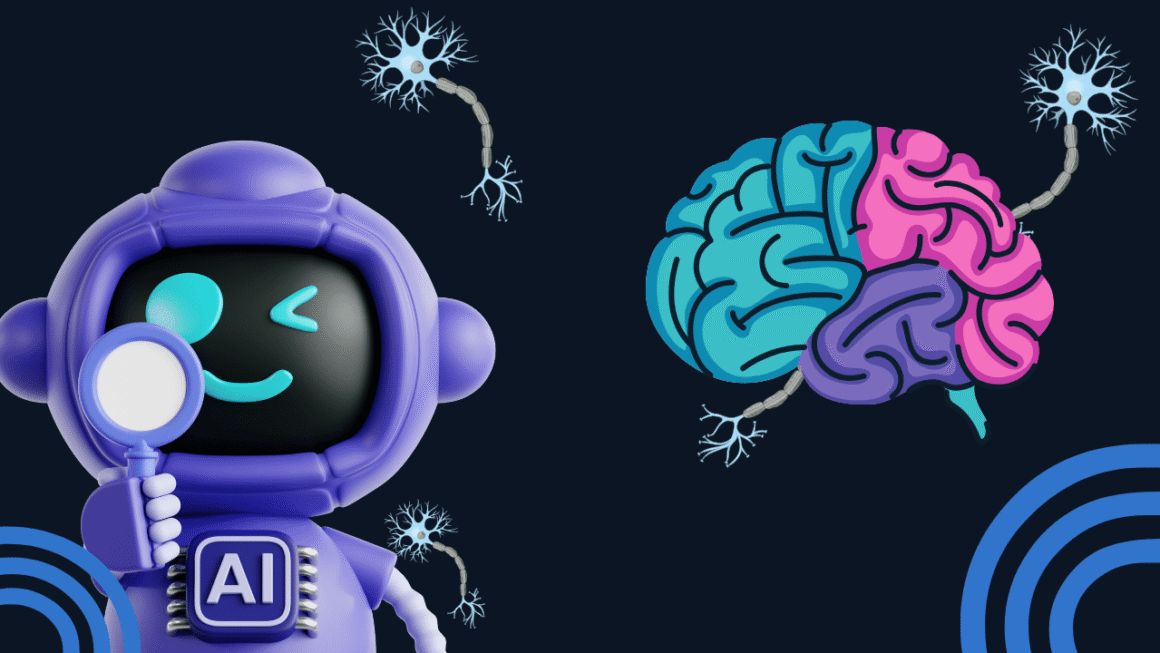Are you constantly feeling worried, even when there’s no apparent reason? Does your anxiety interfere with your daily life, making it difficult to concentrate, sleep, or even enjoy your hobbies? You might be experiencing Generalized Anxiety Disorder (GAD), a common mental health condition that affects millions worldwide. Understanding GAD, its symptoms, causes, and effective treatments is the first step toward reclaiming your peace of mind and living a fulfilling life. This article will provide a comprehensive overview of GAD, empowering you with the knowledge and tools to manage your anxiety and seek appropriate support.
Understanding Generalized Anxiety Disorder (GAD)
What is GAD?
Generalized Anxiety Disorder (GAD) is characterized by persistent and excessive worry about a variety of things, even when there is little or no reason to worry. This worry is often difficult to control and can significantly impact daily functioning. Unlike normal anxiety, which is typically triggered by specific events or situations, GAD involves chronic, diffuse anxiety that feels pervasive and difficult to escape.
GAD is more than just feeling stressed. It’s a diagnosable condition that requires professional intervention in many cases. It’s important to understand that you’re not alone; GAD is a common condition, and effective treatments are available.
Statistics and Prevalence
According to the Anxiety & Depression Association of America (ADAA), GAD affects 6.8 million adults, or 3.1% of the U.S. population, every year. Women are twice as likely to be affected as men. GAD often co-occurs with other mental health conditions, such as depression and other anxiety disorders.
Understanding the prevalence of GAD highlights the importance of awareness and access to mental health resources. Knowing that you’re not alone in your struggles can be a source of comfort and motivation to seek help.
Symptoms of GAD
Psychological Symptoms
GAD manifests through a range of psychological symptoms, including:
- Persistent Worry: Excessive worry about everyday things, such as work, health, finances, or relationships. For example, constantly worrying about being late to work, even when leaving with plenty of time.
- Difficulty Controlling Worry: Feeling unable to stop the racing thoughts and constant anxiety. A common example is being unable to stop replaying negative scenarios in your head.
- Restlessness or Feeling On-Edge: A constant sense of being keyed up or on edge. This might manifest as an inability to sit still or a feeling of being constantly alert.
- Irritability: Feeling easily annoyed or frustrated. Small things that normally wouldn’t bother you can trigger significant irritation.
- Difficulty Concentrating: Trouble focusing on tasks or remembering things. This can lead to decreased productivity and performance at work or school.
- Mind Going Blank: Experiencing moments where your mind goes blank due to anxiety, making it hard to recall information or think clearly.
Physical Symptoms
GAD also presents with a variety of physical symptoms, including:
- Muscle Tension: Aches and pains in the muscles, especially in the neck, shoulders, and back. Chronic tension can lead to headaches.
- Fatigue: Feeling tired and drained, even after adequate sleep. Anxiety can disrupt sleep patterns and contribute to fatigue.
- Sleep Disturbances: Difficulty falling asleep, staying asleep, or experiencing restless sleep. Worries often keep you awake at night.
- Headaches: Frequent tension headaches or migraines. Muscle tension and stress can trigger headaches.
- Stomach Problems: Nausea, diarrhea, or irritable bowel syndrome (IBS). Anxiety can significantly impact the digestive system.
- Sweating: Excessive sweating, even when not physically active.
Causes and Risk Factors of GAD
Biological Factors
Research suggests that genetics and brain chemistry play a role in the development of GAD. People with a family history of anxiety disorders are more likely to develop GAD themselves. Imbalances in neurotransmitters, such as serotonin and norepinephrine, are also thought to contribute to anxiety.
Environmental Factors
Stressful life events, such as trauma, abuse, or significant loss, can trigger GAD. Chronic stress from work, relationships, or financial difficulties can also contribute to the development of the disorder. Exposure to environmental toxins and certain medical conditions can also increase the risk.
Psychological Factors
Certain personality traits, such as perfectionism and negative thinking, can make individuals more susceptible to GAD. Learned behaviors, such as observing anxious behavior in parents or caregivers, can also contribute. Maladaptive coping mechanisms, such as avoidance and rumination, can perpetuate anxiety.
Risk Factors
- Family history of anxiety disorders
- Traumatic experiences
- Chronic stress
- Certain personality traits (e.g., perfectionism)
- History of other mental health conditions (e.g., depression)
- Substance abuse
Treatment Options for GAD
Psychotherapy
Psychotherapy, also known as talk therapy, is a highly effective treatment for GAD. Cognitive Behavioral Therapy (CBT) is a common type of therapy used to help individuals identify and change negative thought patterns and behaviors that contribute to anxiety. Exposure therapy, a component of CBT, helps individuals gradually confront their fears in a safe and controlled environment. Acceptance and Commitment Therapy (ACT) is another form of therapy that helps individuals accept their anxious thoughts and feelings without judgment and commit to living a meaningful life despite their anxiety.
- Cognitive Behavioral Therapy (CBT): Teaches you to identify and change negative thought patterns.
- Exposure Therapy: Gradually exposes you to feared situations to reduce anxiety.
- Acceptance and Commitment Therapy (ACT): Helps you accept anxious thoughts and commit to living a meaningful life.
Medication
Medication can be an effective way to manage the symptoms of GAD. Antidepressants, such as selective serotonin reuptake inhibitors (SSRIs) and serotonin-norepinephrine reuptake inhibitors (SNRIs), are often prescribed to reduce anxiety. Anti-anxiety medications, such as benzodiazepines, can provide rapid relief from anxiety symptoms, but they are typically used for short-term management due to the risk of dependence. It’s important to discuss the risks and benefits of medication with your doctor before starting treatment.
- SSRIs (Selective Serotonin Reuptake Inhibitors): Increase serotonin levels in the brain, improving mood and reducing anxiety.
- SNRIs (Serotonin-Norepinephrine Reuptake Inhibitors): Increase serotonin and norepinephrine levels, addressing both anxiety and depression.
- Benzodiazepines: Provide rapid relief but carry a risk of dependence and are typically used short-term.
Lifestyle Changes
Making healthy lifestyle changes can significantly reduce anxiety symptoms. Regular exercise, a balanced diet, adequate sleep, and stress management techniques can all contribute to improved mental health. Mindfulness meditation, yoga, and deep breathing exercises can help calm the mind and reduce anxiety. Limiting caffeine and alcohol consumption can also be beneficial, as these substances can exacerbate anxiety symptoms.
- Regular Exercise: Releases endorphins and reduces stress hormones.
- Balanced Diet: Provides essential nutrients for brain health.
- Adequate Sleep: Allows the brain to rest and repair.
- Stress Management Techniques (e.g., meditation, yoga): Calms the mind and reduces anxiety.
Self-Help Strategies for Managing GAD
Relaxation Techniques
Learning and practicing relaxation techniques can help reduce anxiety symptoms in the moment. Deep breathing exercises, progressive muscle relaxation, and guided imagery can all promote relaxation and reduce muscle tension. These techniques can be used anytime and anywhere to manage anxiety symptoms.
Mindfulness Meditation
Mindfulness meditation involves focusing on the present moment without judgment. This practice can help individuals become more aware of their thoughts and feelings without getting caught up in them. Regular mindfulness meditation can reduce anxiety and improve overall well-being.
Cognitive Restructuring
Cognitive restructuring involves identifying and challenging negative thought patterns. This technique can help individuals develop more realistic and positive ways of thinking. By challenging negative thoughts, individuals can reduce their anxiety and improve their mood.
Time Management and Organization
Poor time management and disorganization can contribute to anxiety. Learning to prioritize tasks, break down large tasks into smaller steps, and create a structured schedule can reduce stress and improve productivity. Using tools such as calendars, to-do lists, and time management apps can be helpful.
Social Support
Connecting with friends, family, or support groups can provide emotional support and reduce feelings of isolation. Sharing your experiences with others who understand can be validating and empowering. Joining a support group can provide a sense of community and shared experience.
Conclusion
Generalized Anxiety Disorder can be a challenging condition, but it is treatable. By understanding the symptoms, causes, and treatment options, you can take control of your anxiety and improve your quality of life. Remember that seeking professional help is a sign of strength, not weakness. With the right treatment and self-help strategies, you can manage your anxiety and live a fulfilling life. Don’t hesitate to reach out to a mental health professional for support and guidance. Your mental well-being is worth it.




